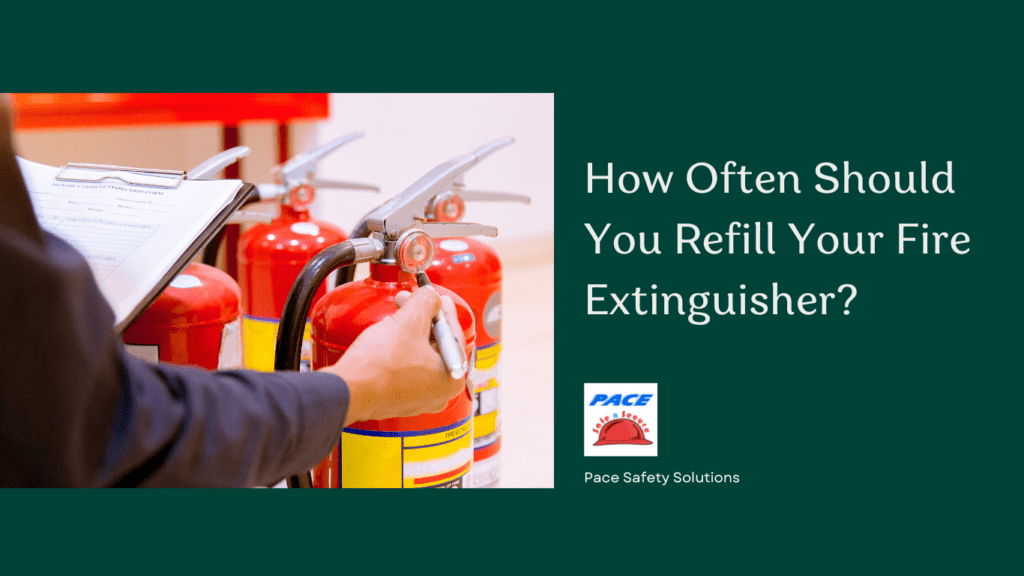Introduction
Fire safety is a top priority for individuals and businesses alike. One of the key components of fire safety is having a functioning fire extinguisher on hand. However, simply having an extinguisher is not enough. Regular maintenance, including refilling, is essential to ensure that your fire extinguisher is always ready to respond effectively in case of a fire emergency.
Welcome to our comprehensive maintenance guide, brought to you by Pace Safety Solutions. In this blog, we’ll guide you through the important question: “How often should you refill your fire extinguisher?” to help you keep your space safe with safety regulations.
Understanding Fire Extinguisher Maintenance
Fire extinguisher maintenance involves several crucial steps to ensure the device’s reliability. These steps typically include inspection, testing, and, if necessary, refilling. The frequency of these maintenance tasks depends on various factors, including the type of fire extinguisher, its environment, and usage.
Let's break down the maintenance process and explore how often you should refill your fire extinguisher.
1. Inspection:
Regular visual inspections of your fire extinguisher should occur monthly. During these inspections, check for any visible damage, corrosion, or signs of wear. Ensure that the pressure gauge is in the green or “ready” zone.
2. Testing:
Fire extinguishers require more thorough testing and maintenance on an annual basis. This includes a test discharge to verify their functionality. A professional technician should perform this testing to ensure proper performance.
3. Refilling:
Fire extinguisher refilling should be done as needed based on the inspection and testing results. If the pressure is low, the extinguisher has been discharged, or it fails the annual testing, it’s time to refill the extinguisher.
Factors Influencing Refilling Frequency
The frequency of fire extinguisher refilling is not a one-size-fits-all answer. It depends on several factors:
1. Type of Extinguisher:
Different types of fire extinguishers require different maintenance schedules. For example, a dry chemical fire extinguisher typically requires more frequent refilling than a CO2 extinguisher.
2. Environmental Conditions:
Extinguishers in harsh environments, such as industrial settings or outdoor locations, may require more frequent refilling due to exposure to elements like extreme temperatures and humidity
3. Usage:
High-use areas, such as commercial kitchens or workshops, may require more frequent refilling because the extinguisher is more likely to be discharged
4. Regulatory Requirements:
Local regulations and safety standards may dictate specific maintenance schedules that you must follow to remain compliant.
Conclusion
Fire extinguisher refilling is a critical part of fire safety maintenance. While monthly inspections can help you catch obvious issues, annual professional testing is essential to ensure proper functionality.
The decision of when to refill your fire extinguisher should be based on the results of these inspections and tests. Regular maintenance, including refilling, ensures that your fire extinguisher is always prepared to protect lives and property in the event of a fire emergency.
If you’re unsure about the condition of your fire extinguisher or its maintenance schedule, consult with Pace Safety Solutions to keep your space safe and compliant.

